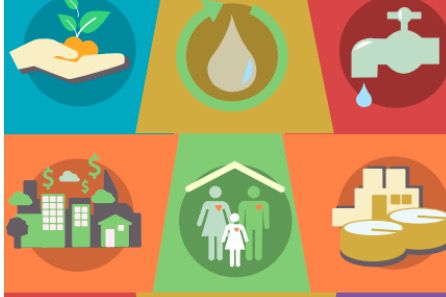PARIS, November 30 – Earth’s climate appears to be changing more quickly and deeply than a benchmark UN report for policymakers predicted, top scientists said ahead of international climate talks starting Monday in Poland.
Evidence published since the Intergovernmental Panel for Climate Change’s (IPCC) February 2007 report suggests that future global warming may be driven not just by things over which humans have a degree of control, such as burning fossil fuels or destroying forest, a half-dozen climate experts told AFP.
Even without additional drivers, the IPCC has warned that current rates of greenhouse gas emissions, if unchecked, would unleash devastating droughts, floods and huge increases in human misery by century’s end.
But the new studies, they say, indicate that human activity may be triggering powerful natural forces that would be nearly impossible to reverse and that could push temperatures up even further.
At the top of the list for virtually all of the scientists canvassed was the rapid melting of the Arctic ice cap.
"In the last couple of years, Arctic Sea ice is at an all-time low in summer, which has got a lot of people very, very concerned," commented Robert Watson, Chief Scientific Advisor for Britain’s department for environmental affairs and chairman of the IPCC’s previous assessment in 2001.
"This has implication’s for Earth’s climate because it can clearly lead to a positive feedback effect," he said in an interview.
When the reflective ice surface retreats, the Sun’s radiation – heat – is absorbed by open water rather than bounced back into the atmosphere, creating a vicious circle of heating.
"We had always known that the Arctic was going to respond first," said Mark Serreze of the National Snow and Ice Data Center in Boulder, Colorado. "What has us puzzled is that the changes are even faster than we would have thought possible," he said by phone.
New data on the rate at which oceans might rise has also caused consternation.
"The most recent IPCC report was prior to … the measurements of increasing mass loss from Greenland and Antarctica, which are disintegrating much faster than IPCC estimates," said climatologist James Hansen, head of NASA’s Goddard Institute for Space Studies in New York.
Unlike the Arctic ice cap, which floats on water, the world’s two major ice sheets – up to three kilometers (two miles) thick – sit on land.
Runaway sea level rises, Hansen said, would put huge coastal cities and agricultural deltas in Bangladesh, Egypt and southern China under water, and create hundreds of millions of refugees.
The IPCC’s most recent assessment "did not take into account the potential melting of Greenland, which I think was a mistake," said Watson, the former IPCC chairman.
Were Greenland’s entire ice block to melt, it would lift the world’s sea levels by almost seven meters (22.75 feet), while western Antarctica’s ice sheet holds enough water to add six metres (20 feet).
Neither of these doomsday scenarios is on the foreseeable horizon.
But for coastal dwellers, even a relatively small loss of their ice could prove devastating.
IPCC estimates of an 18-to-59 centimetre (7.2-to-23.2 inches) rise by 2100 has been supplanted among specialists by an informal consensus of one metre (39 inches), said Serreze.
The accelerating concentration of greenhouse gases in the atmosphere, and signs of the planet’s dwindling ability to absorb them, are also causing some scientists to lose sleep.
During the 1970s, there were on average 1.3 parts per million (ppm) of carbon dioxide – the main greenhouse gas – in the air. In the 1980s the figure was 1.6 ppm, and in the 1990s 1.5 ppm.
In the period 2000-2007, however, the concentration jumped to an average 2.0 ppm, with a high of 2.2 last year, according to the Global Carbon Project, based in Australia.
"The present concentration is the highest during the last 650,000 years and probably during the last 20 million years," said the Global Carbon Project’s Pep Canadell, a researcher at Australia’s Commonwealth Scientific and Industrial Research Organisation.
And in 2008, he said, there has been an "exponential growth" in the atmospheric concentration of methane, another greenhouse gas that is an even more potent driver of global warming than CO2.
One potential source of both gases is frozen tundra in the Arctic and sub-Arctic regions, where temperatures have risen faster than anywhere else on Earth.
"The amount of carbon that is locked up in permafrost that could be released into the atmosphere is just about on a par with the atmospheric load the world has right now," said Serreze.
These higher concentrations of greenhouse gases come at a time when Earth’s two major "carbon sinks" – forests and especially oceans – are showing signs of saturation.
The December 1-12 forum of 192-member UN Framework Convention on Climate Change (UNFCCC) comes midway through a two-year process launched in Bali for braking the juggernaut of global warming.
Scheduled to run until December 12, the talks are a stepping stone towards a new pact – due to be sealed in Copenhagen in December 2009 – for reducing emissions and boosting adaptation funds beyond 2012, when the current provisions of the UN’s Kyoto Protocol expire.
































